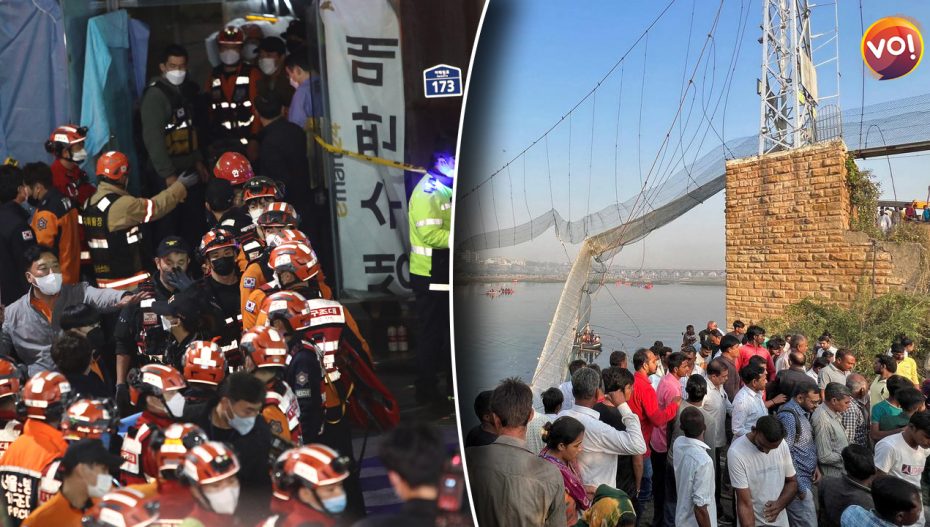The parallels between the Morbi Footbridge tragedy on Sunday, October 31, and the tragedy that occurred in Seoul just the day before, on Saturday, October 30, are many. The stampede in a narrow lane in Seoul’s Itaewan area left 154 people dead. The Morbi death count has also crossed 150, though the final figure is still awaited. The Morbi disaster is linked to Diwali and New Year celebrations, while the Seoul tragedy is linked to Halloween celebrations. In both countries, the governments have called for an investigation into the causes. Both tragedies are still headline news.
But these are just superficial similarities. It’s when you look at the videos of the two events, taken just before they actually occurred, that you realise how similar was the crowd behaviour. They show a nightmare. A crowd of nearly one lakh people is seen in a narrow lane in Seoul, packed so tight that some of them later said “it was hard to breathe.” In Morbi, more than 200 people are reported to have been on the narrow footbridge and the video shows some young men pushing the sides, trying to get the flimsy-looking bridge to swing. In Seoul, a group of young men are reported to have started pushing the crowd, causing people ahead of them to fall down, leading to a stampede.
Watching the videos, you wonder: why would people put themselves in such a position? These are not the kind of people who go sky-diving or kayaking down the rapids for the adrenaline rush. They were celebrating festivals, not looking for dangerous thrills. But there they are, packed suffocatingly in a narrow street and on a bridge swinging high over a river.
Maybe it’s the wisdom of crowds. People find safety in numbers. If many others are doing it, how dangerous can it possibly be? We can surely count on the support of others if something happens. The courage that comes from being in a large group can be a wonderful thing when it comes to organised protest and street marches. But when things get unruly, as it did in Morbi and Seoul, it’s the most vulnerable who die.
There is one major difference between the Seoul and Morbi tragedies though. The Seoul stampede occurred on a street, in a public area. The Morbi tragedy occurred on a bridge whose operation, upkeep and maintenance are the responsibility of a private company called Oreva. The people who died bought tickets from this company before they got on the bridge.
The Patels of Oreva are an ignorant lot who should never have been given such a responsibility. Judging by their statements, they have no knowledge of the civil engineering that goes into operating a 150-year-old bridge. They own Ajanta Clocks, which is a low-tech operation where workers basically insert chips imported from Taiwan into plastic clock casings. A company with such little technical expertise has no business maintaining bridges.
Also Read: Watch | Gujarat Builders On Parking Issues & Its Solution













